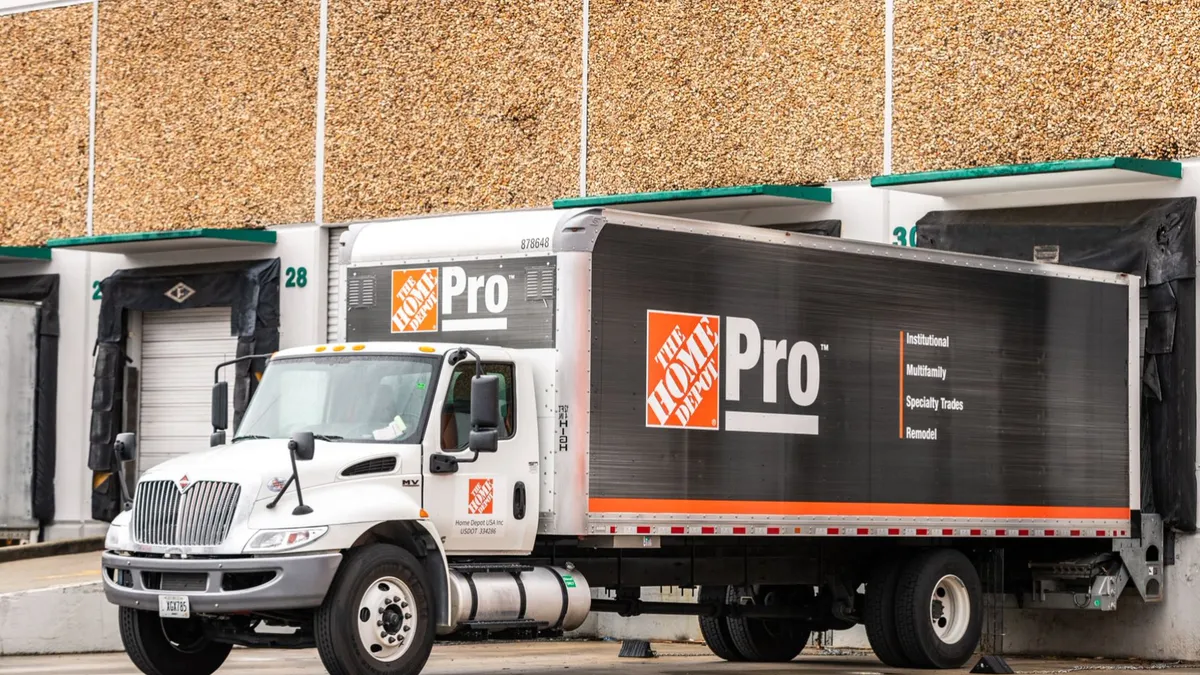Dive Brief:
- The Home Depot’s first-quarter net sales fell 2.3% to $36.4 billion from $37.3 billion a year ago, the company said on Tuesday. Comparable sales in Q1 decreased 2.8%, with a U.S. comparable sales decrease of 3.2%, and net earnings declined 7% to $3.6 billion from $3.9 billion year over year.
- CEO Ted Decker said on an earnings call with analysts that ongoing softness in larger discretionary home improvement projects and the weather affected Q1’s performance. But Home Depot also sees a $250 billion total addressable market opportunity with residential pro contractors who shop across categories, Decker said.
- The company is maintaining its previous full-year guidance which forecasts sales growth of about 1%, a comp sales decline of about 1%, a gross margin of nearly 34% and the addition of about 12 new Home Depot stores by the end of the fiscal year.
Dive Insight:
Home Depot's first quarter comps missed analysts' and Wall Street's expectations as a chilly start to spring and a tough housing market tamped down spending.
Neil Saunders, managing director of GlobalData, said Home Depot’s current performance is chiefly affected by softness in the current soft housing market. “Across the quarter, existing home sales fell by 4.4% over last year,” Saunders said.
“This is a more moderate decline compared to the back end of 2023, but it continues to sap demand,” Saunders continued. “Earlier on in this year, the hope was that interest rate cuts may inject some momentum into people buying and selling homes, but with inflation still heavier than the Federal Reserve wants, the prospects of this happening are narrowing.”
While the store remains the center of what Decker described as Home Depot’s pro ecosystem, he said the company is developing additional fulfillment options, digital assets and capabilities targeted at the professional residential customer in place in 17 markets by the end of this fiscal year. Home Depot announced in March it plans to acquire building materials supplier SRS Distribution for about $18 billion. The deal is expected to close at the end of FY 2024.
Foot traffic to Home Depot and rival Lowe’s were down 1.1% and 4%, respectively in Q1, according to data from Placer.ai. However, both big box retailers saw visit gaps narrow as the quarter ended. In contrast, traffic at Tractor Supply Co. grew nearly 5% and it grew 10% at Harbor Freight driven in part by their expanding store footprints.
“On the professional side, the market is a little stronger,” Saunders said. “However, pockets of softness remain, and Home Depot can not longer rely on the pro market to pull it out of the hole on the consumer side. That said, we believe that Home Depot is holding on to pros far better than Lowe’s, mainly because it is seen as being stronger on prices, service, and the depth of range it offers.”
Billy Bastek, Home Depot’s executive vice president of merchandising, said sales using the company’s digital platforms increased 3.3% from a year ago and nearly half of Q1’s online orders were fulfilled through stores. However, “we continue to see softer engagement in larger discretionary project projects where customers typically use financing to fund the project such as kitchen and bath remodels,” Bastek said during the call.













